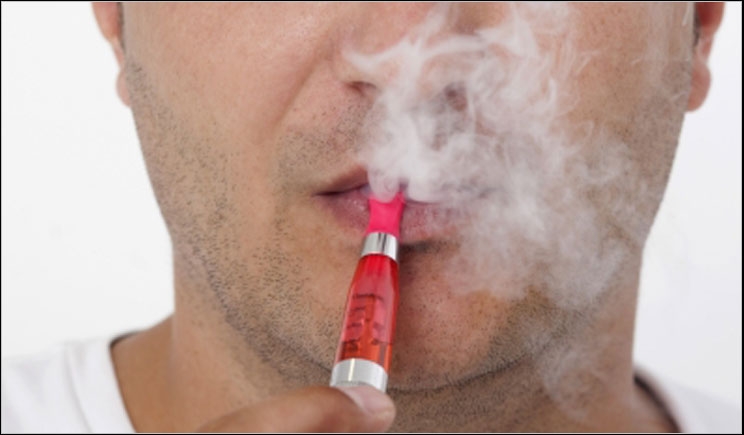
There’s no good news when it comes to adolescents and e-cigarettes. Teens who “vape” are more likely to try combustible tobacco in the form of cigarettes, cigars, and hookahs, according to The Journal of the American Medical Association. And making this bad situation worse, the number of teens using e-cigarettes is rising. Dentists who care for their long-term health should be concerned.
“Nicotine’s addictive properties are a risk for any age group, but with adolescents, the stakes are even higher,” said Dr. K. Vendrell Rankin, director of Texas A&M University Baylor College of Dentistry’s Tobacco Treatment Services.
A survey of 2,530 fourteen-year-olds at 10 public high schools in Los Angeles found that teens who use e-cigarettes are more likely to transition to smokeable tobacco. Researchers cautioned that additional studies were needed to determine whether the association is causal, though.
“Some e-cigarette devices appear to be very efficient at delivering nicotine to the lungs and brain,” said Adam Leventhal, PhD, associated professor and director of the University of Southern California Health, Emotion & Addiction Laboratory at the Keck School of Medicine.
“If you enjoy the experience of inhaling nicotine in e-cigarettes, it makes sense that you would be open to trying other nicotine products, like cigarettes, hookah, and cigars,” explained Leventhal, who was one of the authors of the article in JAMA.
The students in the survey had never smoked tobacco when they were first queried at the start of ninth grade. Of the 2,530 surveyed, only 222 had used e-cigarettes. When surveyed again 6 months later, 30.7% of the e-cigarette users had started smoking one or more combustible tobacco products, compared to 8.1% of tobacco users who had never used e-cigarettes. By the 12-month mark, differences in rates of tobacco smoking persisted between students who had used e-cigarettes versus those who had not.
Overall tobacco use in the United States has been declining among adolescents. About 9 out of every 100 high school students (9.2%) reported that they had smoked cigarettes in the past 30 days in 2014, which is a decrease from 15.8% in 2011, according to the Centers for Disease Control and Prevention (CDC). Yet the CDC also notes that e-cigarette use among middle and high school students has tripled from 2013 to 2014. If more teens are using e-cigarettes, and e-cigarettes lead to combustible tobacco, then the number of teens who smoke could start rising again.
“In today’s rapidly evolving tobacco marketplace, the surge in youth use of novel products like e-cigarettes forces us to confront the reality that the progress we have made in reducing youth cigarette smoking rates is being threatened,” said Mitch Zeller, JD, director of the Food and Drug Administration’s Center for Tobacco Products.
Don’t pass smoking off as just a phase, either, say the experts. Nearly 9 out of 10 cigarette smokers first tried smoking by the age of 18, with more than 3,800 youth age 18 and younger trying their first cigarette each day, according to the CDC. And, the American Lung Association reports, most of the adolescents who have smoked at least 100 cigarettes in their lifetime would like to quit but are unable to do so.
“We want parents to know that nicotine is dangerous for kids at any age, whether it’s an e-cigarette, hookah, cigarette, or cigar,” said CDC director Tom Frieden, MD, MPH. “Adolescence is a critical time for brain development. Nicotine exposure at a young age may cause lasting harm to brain development, promote addiction, and lead to sustained tobacco use.”
So why should dentists be concerned? Because the effects of smoking on oral health have been well established. In fact, it’s been 50 years since the Surgeon General’s first report on smoking and health. These effects include stained teeth and tongue and a dulled sense of taste and smell. They also include slow healing after a tooth extraction or other surgery, difficulties in correcting cosmetic dental problems, and gum disease.
The biggest threat, though, lies in oral cancer. Approximately 45,750 people in the United States will be newly diagnosed with oral cancer in 2015, says the Oral Cancer Foundation, with one person dying of oral cancer every hour of every day. When found early enough, there is an 80% to 90% survival rate. The problem, though, is that most diagnoses occur in stage 3 or 4.
Efforts are underway to increase early detection. The Oral Cancer Foundation’s “Be Part of the Change” campaign is helping registered dental hygienists (RDHs), who are on the front lines of patient awareness and education, discover suspect tissues. Also, companies such as Vigilant Biosciences, OralDNA Labs, PeriRx, Zila Pharmaceuticals, and more are developing noninvasive screening technologies and treatments for dentists and RDHs to use in practice.
Yet the battle against oral cancer and other aspects of poor dental health should begin earlier, experts say, by discouraging teen e-cigarette use. The link between the first puff on an e-cigarette and the appearance of lesions inside the mouth may span decades, but it is something that must be addressed despite the difficulty
“I don’t think e-cigarettes are going to drop off,” Rankin said. “It’s the newest—or most popular—kid on the block right now.”
Related Articles
Alternative Forms of Tobacco and E-Cigarettes: Harmful or Harm Reduction?











